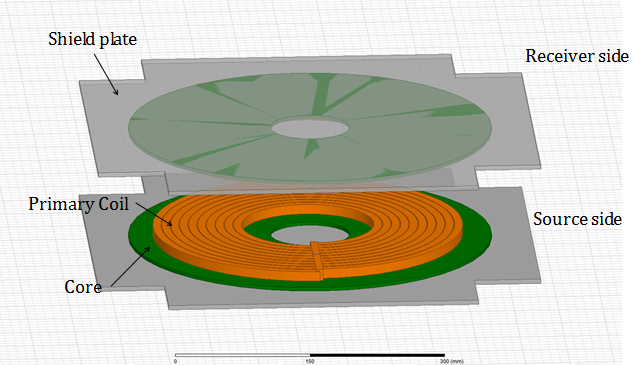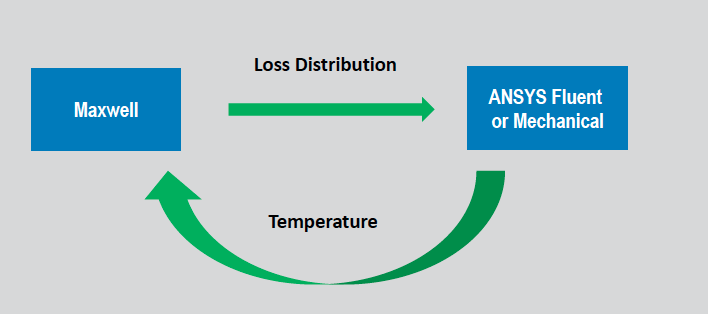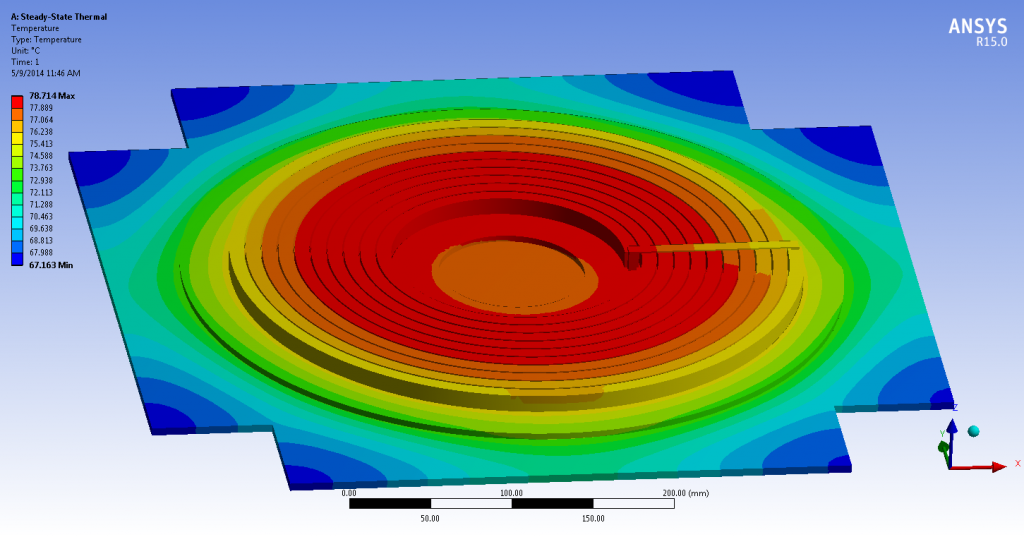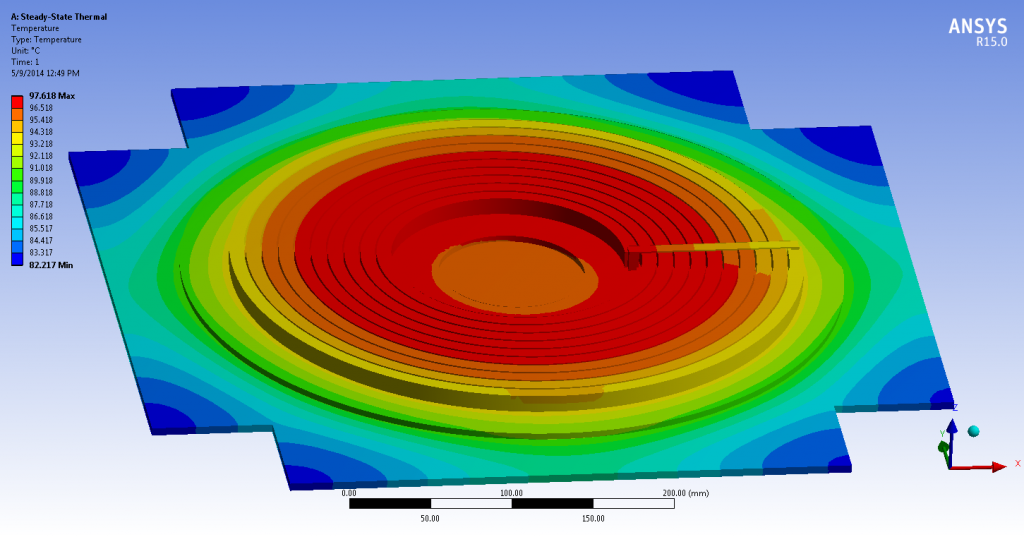Coupled Electromagnetic – Thermal Simulation for High Power Wireless Power Transfer
By Xiao Hu
Co Written and edited by Manoj Kumar Mallela and Paul Paret, editors of IEEE TEI Newsletter
This article is written based on the part of presentation given by Dr. Xiao Hu at the Wireless Power Transfer (WPT) workshop at The University of Michigan in Dearborn, MI, March 13 2014. Dr. Xiao Hu is the principal engineer at ANSYS Inc.
The wireless transformer used in high-power, wireless power transfer is mainly an electromagnetic device and temperature performance is key to its efficiency. Temperature has a strong impact on efficiency of such a device since electromagnetic properties, e.g. conductivity and permeability, are temperature dependent. An increase of temperature can increase conductivity and thus generate more heat dissipation and cause a decrease of overall efficiency. As for the core material used in such devices, tests show that some materials could completely lose magnetic characteristics when temperatures exceed 200 0C and very high temperatures pose safety concerns. Finally, where thermal stressing is a concern, then one must know the temperature ranges before thermal stress calculations can be performed. Therefore, when doing accurate simulations for wireless power transform, coupled electromagnetic and thermal analysis is necessary.
 |
| Figure 1: An example of wireless power transformer |
Figure 1 shows a wireless power transformer used in high power wireless power transfer, e.g. EV applications. The top portion could be on a vehicle, and the bottom portion is typically fixed on the ground. Alternate current is used to excite the bottom primary coil. Through induction an EMF is induced in the top secondary coil, which is then used to charge the battery.
The concept of coupled analysis of a transformer is very simple at its high level, as shown in Figure 2. The losses (eddy current losses, core losses, etc.) in the transformer generate heat. The loss distribution data of the transformer from electromagnetic simulation software (ANSYS Maxwell) is passed as input to the thermal analysis software (ANSYS Fluent or Mechanical). The temperature map of the transformer obtained as output is then fed back to ANSYS Maxwell to update the temperature dependent properties. The major challenge for the coupled analysis is the fact that the electromagnetic problem has a very small time scale of microseconds, and the thermal problem has a much large time scale of minutes. Because of the large time scale discrepancy, time-averaged heat source can be used as the input for thermal analysis. ANSYS Maxwell has a frequency domain solver and a time-domain solver. If non-linearity is not strong, the frequency-domain solver can be used for speed. If strong non-linearity is present, then the time-domain solver could be used for greater accuracy. ANYSY Fluent or Mechanical both use time-domain solvers when they are used to solve for temperature.
 |
| Figure 2: Concept of 2-way coupling |
Figure 3 shows a temperature distribution of the bottom portion from ANSYS Mechanical with the loss distribution calculated from ANSYS Maxwell. The loss calculated here includes Ohmic loss and core loss. The properties are calculated at room temperature of 22 0C.
 |
| Figure 3: Temperature distribution using properties at room temperature |
But properties are functions of temperature. The resistance of copper increases with temperature, making it possible to run into a thermal run-away situation. Temperature also affects the permeability of the core material. For some core material, when temperature reaches certain value, the permeability drops drastically, making the material unusable. Therefore, when doing simulation, temperature feedback is necessary. When two-way coupling is used, Figure 4 shows the final converged temperature distribution. As shown, the maximum temperature from two-way coupled calculation is 97.6 0C, while the maximum temperature using properties at room temperature is 78.7 0C. The two-way calculation gives 24% higher temperature results. This shows that for accurate results, two-way coupled simulation considering temperature feedback is necessary for wireless power transformer thermal analysis.
 |
| Figure 4: Temperature distribution considering temperature feedback |

Xiao Hu is a principal engineer at ANSYS Inc. Xiao has spent a combined 14 years of his career at ANSYS and Fluent Corporation working with customers in modeling and simulation. Xiao spent his earlier years with Fluent working on powertrain Computational Fluid Dynamics (CFD) applications. More recently, he has been focusing on applications involving electric powertrain thermal analysis. Xiao has a Ph.D. degree in mechanical engineering from Purdue University.
About the Newsletter
Editors-in-Chief

Jin-Woo Ahn
Co-Editor-in-Chief

Sheldon Williamson
Co-Editor-in-Chief
TEC Call for Articles 2023 - Advances in Charging Systems
The TEC eNewsletter is now being indexed by Google Scholar and peer-reviewed articles are being submitted to IEEE Xplore.
To submit an article click here.


